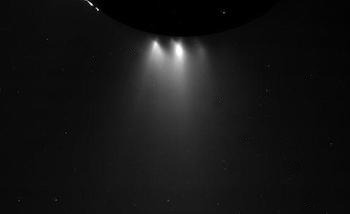What Is Human Existence? It Turns Out It’s Pretty Simple: We Are Dead Stars, Looking Back Up At The
What is human existence? It turns out it’s pretty simple: We are dead stars, looking back up at the sky.
Dr. Michelle Thaller, NASA astronomer (via psych-facts)
More Posts from Theidlerhour and Others
I need help. So, you know how when you’re in a bus, or in a car, and you throw something into the air and it basically moves with the bus? It goes straight back down when you throw it up, as if the bus wasn’t moving. But the bus /is/ moving so PLEASE EXPLAIN WHY

26,500 meals, 180 spacewalks and 1,200 scientific results publications later, we celebrate 15 years of continuous human presence aboard the International Space Station.
An infographic from NASA.
Credit: NASA’s Website
Solar System: 5 Things to Know This Week
Our solar system is huge, so let us break it down for you. Here are 5 things to know this week:
1. Letting the Air Out

The atmosphere on Mars is whisper-thin and drier than bone–but it wasn’t always that way. For the past year, the MAVEN mission has been orbiting the planet, piecing together clues about what happened to all the air on Mars. At 2 p.m. EST on Nov. 5, we will hold a briefing on some new findings about the Martian atmosphere. Make sure to tune in on NASA Television.
2. How Much Juno about Jupiter?

We’re all going to know a lot more about the king of planets soon, thanks to the Juno mission. Juno’s project scientist will be giving a live lecture on Nov. 5 and 6 to explain what discoveries might await and how the spacecraft is expected to survive Jupiter’s dangerous radiation environment for over a year, long enough to make over 30 close polar passes. Watch the live lecture HERE.
3. Excitement at Enceladus

Our Cassini spacecraft has returned stunning images from its ultra-close flyby of Saturn’s active moon Enceladus on Oct. 28. The photos are providing a quick look at Enceladus and its plume of icy vapor from the moon’s geysers. But some of the most exciting science is yet to come, as scientists will be poring over data from Cassini’s instruments to see what they detected as they flew through the plume.
4. A New Dimension in Lunar Landscapes

The Lunar Reconnaissance Orbiter maps the moon in boulder-by-boulder detail daily. The team that operates the spacecraft’s most powerful camera has been releasing 3D versions of its high-resolution looks at the surface. You can see depth and detail in the pictures if you can get or make some red-blue glasses.
5. Pluto in Perspective

The New Horizons spacecraft has fired its engines again as it carries out a series of four maneuvers propelling it toward an encounter with the ancient Kuiper Belt object 2014 MU69, a billion miles farther from the sun than Pluto. Meanwhile, it continues the ongoing download of data from the Pluto encounter, including this recent stunner.
Make sure to follow us on Tumblr for your regular dose of space: http://nasa.tumblr.com
The mistakes you’ve made do not invalidate everything you say/do/achieve for the rest of your life.
(via michael-julian)
A mathematician, a physicist, and an engineer were in a hotel for a convention.
Then, in the middle of the night for no apparent reason, a fire breaks out in the engineer’s wastebasket. The engineer rushes over to the bathroom, empties out the ice bucket, fills it with water and pours it into the trash can, dousing the fire. Satisfied that the problem was solved, the engineer goes back to sleep.
Shortly thereafter, a fire broke out in the physicist’s wastebasket. The physicist rushes to the bathroom, whips out his calculator, frantically does a few computations, pulls out a cup, fills it to a precisely measured level, and rushes back to the wastebasket, pouring the water onto the fire. As the last drop hits the flame, the fire goes out. Satisfied that the problem was solved, the physicist goes back to sleep.
Finally, a fire breaks out in the mathematician’s room. The mathematician rushes to the bathroom, sees the ice bucket, sees a cup, sees the water faucet. Satisfied that the problem could be solved, he goes back to sleep.
(◡‿◡✿)


-
 asteroid-hyalosis reblogged this · 2 months ago
asteroid-hyalosis reblogged this · 2 months ago -
 muhtesemz reblogged this · 4 months ago
muhtesemz reblogged this · 4 months ago -
 spacesnow reblogged this · 6 months ago
spacesnow reblogged this · 6 months ago -
 boyc0rpse liked this · 7 months ago
boyc0rpse liked this · 7 months ago -
 farvelost reblogged this · 8 months ago
farvelost reblogged this · 8 months ago -
 lunarlegend11 reblogged this · 8 months ago
lunarlegend11 reblogged this · 8 months ago -
 fees-vertes reblogged this · 8 months ago
fees-vertes reblogged this · 8 months ago -
 wrenfea reblogged this · 8 months ago
wrenfea reblogged this · 8 months ago -
 ruthnflora liked this · 8 months ago
ruthnflora liked this · 8 months ago -
 the-utter-most-quest reblogged this · 8 months ago
the-utter-most-quest reblogged this · 8 months ago -
 doeberries reblogged this · 8 months ago
doeberries reblogged this · 8 months ago -
 ohfallingstar reblogged this · 8 months ago
ohfallingstar reblogged this · 8 months ago -
 palindrome-mystery reblogged this · 9 months ago
palindrome-mystery reblogged this · 9 months ago -
 shadowbowgirl13 liked this · 1 year ago
shadowbowgirl13 liked this · 1 year ago -
 tsundere-sunshine liked this · 1 year ago
tsundere-sunshine liked this · 1 year ago -
 palindrome-mystery reblogged this · 1 year ago
palindrome-mystery reblogged this · 1 year ago -
 odn5t9rhpxr7 liked this · 1 year ago
odn5t9rhpxr7 liked this · 1 year ago -
 the-princess-cut-from-marble reblogged this · 1 year ago
the-princess-cut-from-marble reblogged this · 1 year ago -
 still-lost-in-chaos reblogged this · 2 years ago
still-lost-in-chaos reblogged this · 2 years ago -
 nola-aiwe liked this · 2 years ago
nola-aiwe liked this · 2 years ago -
 orose8 liked this · 2 years ago
orose8 liked this · 2 years ago -
 spacentimecreature liked this · 2 years ago
spacentimecreature liked this · 2 years ago -
 tired-reader-writer reblogged this · 2 years ago
tired-reader-writer reblogged this · 2 years ago -
 tired-reader-writer liked this · 2 years ago
tired-reader-writer liked this · 2 years ago -
 bbygh0uul liked this · 2 years ago
bbygh0uul liked this · 2 years ago -
 thesteeplechasefangirl liked this · 2 years ago
thesteeplechasefangirl liked this · 2 years ago -
 cosmicyeen reblogged this · 2 years ago
cosmicyeen reblogged this · 2 years ago -
 trashghetti-v reblogged this · 2 years ago
trashghetti-v reblogged this · 2 years ago -
 trashghetti-v liked this · 2 years ago
trashghetti-v liked this · 2 years ago -
 dracini-rambles reblogged this · 2 years ago
dracini-rambles reblogged this · 2 years ago -
 dracini liked this · 2 years ago
dracini liked this · 2 years ago -
 penowl reblogged this · 2 years ago
penowl reblogged this · 2 years ago -
 penowl liked this · 2 years ago
penowl liked this · 2 years ago -
 thedevilssacrement reblogged this · 2 years ago
thedevilssacrement reblogged this · 2 years ago -
 thedevilssacrement liked this · 2 years ago
thedevilssacrement liked this · 2 years ago -
 confetti-riot liked this · 2 years ago
confetti-riot liked this · 2 years ago -
 acespkmnblog liked this · 2 years ago
acespkmnblog liked this · 2 years ago -
 noblegasxenon liked this · 2 years ago
noblegasxenon liked this · 2 years ago -
 lastoneout reblogged this · 2 years ago
lastoneout reblogged this · 2 years ago -
 planetgraves liked this · 2 years ago
planetgraves liked this · 2 years ago -
 eternalhappiness reblogged this · 2 years ago
eternalhappiness reblogged this · 2 years ago -
 eternalhappiness liked this · 2 years ago
eternalhappiness liked this · 2 years ago -
 u-gotthelove reblogged this · 2 years ago
u-gotthelove reblogged this · 2 years ago
"To awaken my spirit through hard work and dedicate my life to knowledge... What do you seek?"
229 posts

